Nicolas Rothenbühler
26. April 2018/ SILKSCREEN
SILKSCREEN: Printing on Glas
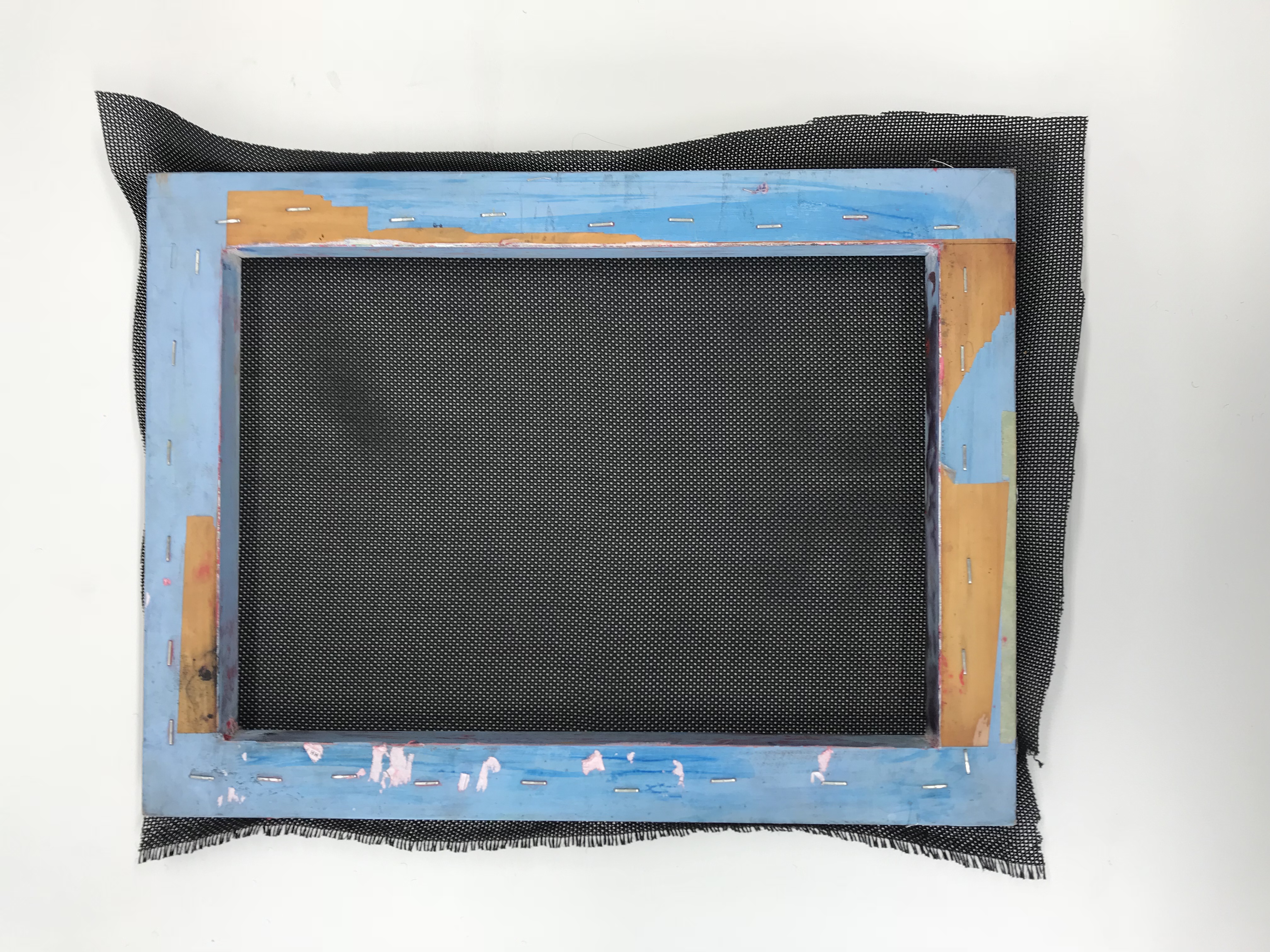






 SITE: 5th floor, end of the hallway of the Silkscreen Atelier.
SITE: 5th floor, end of the hallway of the Silkscreen Atelier.


 IDEA: The Moiree is being created by the metal-mesh of the facade outside of the building and the textile. It moves in realtion to the movement of the spectator. It is seen from at least the middle of the approximately 80 meters long hallway that runs by the silkscreen atelier.
A variation for an application to the SAW building would also work without the metal mesh of the Toni building.The second layer can be placed on the other side of the window on the glas.
I would like to include the fingermarks (see picture above) but in a bigger scale. It would not be made by fingers, but by a elastic silicon-cast from a surface wich has similar characteristics.
IDEA: The Moiree is being created by the metal-mesh of the facade outside of the building and the textile. It moves in realtion to the movement of the spectator. It is seen from at least the middle of the approximately 80 meters long hallway that runs by the silkscreen atelier.
A variation for an application to the SAW building would also work without the metal mesh of the Toni building.The second layer can be placed on the other side of the window on the glas.
I would like to include the fingermarks (see picture above) but in a bigger scale. It would not be made by fingers, but by a elastic silicon-cast from a surface wich has similar characteristics.

 ————————————————————————-
5. April 2018
THOUGHTS/IDEAS FOR 17-19 OF APRIL (Steindruckerei Wolfensberger)
1) I do not know yet what kind of end-product i want (poster, laporello, envelope..)
2) I would like to combine lithography, photogrammetry and digitalprint (like we did)
2.2) When i draw on the litho-stone, how can i see where the photogrammetry will be?
In other words: last time we were drawing “blind”, only seeing the overlay of all at printing. Here some ideas to change this:
Photogrammetry: put a glass plate on the lithostone, which can later be moved over to photogramm.
Lithography: take a dia/beamer and project a photo on the lithoytone.
Digitalprint: take a photo of each and overlay in photoshop.
————————————————————————-
5. April 2018
THOUGHTS/IDEAS FOR 17-19 OF APRIL (Steindruckerei Wolfensberger)
1) I do not know yet what kind of end-product i want (poster, laporello, envelope..)
2) I would like to combine lithography, photogrammetry and digitalprint (like we did)
2.2) When i draw on the litho-stone, how can i see where the photogrammetry will be?
In other words: last time we were drawing “blind”, only seeing the overlay of all at printing. Here some ideas to change this:
Photogrammetry: put a glass plate on the lithostone, which can later be moved over to photogramm.
Lithography: take a dia/beamer and project a photo on the lithoytone.
Digitalprint: take a photo of each and overlay in photoshop.

 3) I am interested in photogrammetry. Here some references by György Kepes:
3) I am interested in photogrammetry. Here some references by György Kepes:


 Looking forward!
————————————————————————-
19. March 2018
Silkscreen experiments
Textile: non woven (Vliesstoff)
Color: Acrylic with Siebdruckpaste
Tools: Frame, stapler
Paper: Laserprint A3
First try
The textile was not permeable for the color and no real print occurred.
Looking forward!
————————————————————————-
19. March 2018
Silkscreen experiments
Textile: non woven (Vliesstoff)
Color: Acrylic with Siebdruckpaste
Tools: Frame, stapler
Paper: Laserprint A3
First try
The textile was not permeable for the color and no real print occurred.


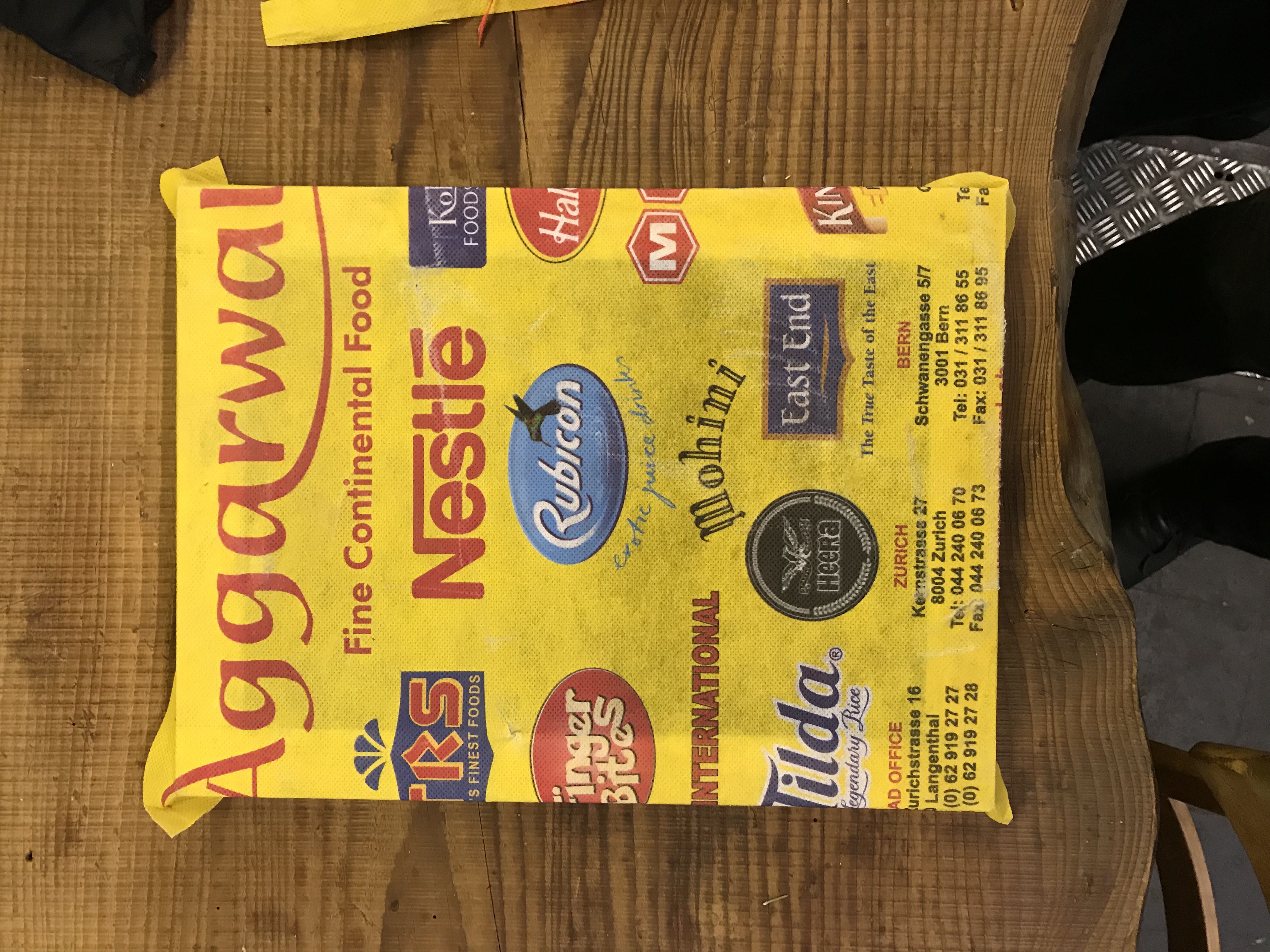
 Second try
The Same colors/tools but a slightly different textile. I poured hot wax on the textile to stop the color from passing through.
Second try
The Same colors/tools but a slightly different textile. I poured hot wax on the textile to stop the color from passing through.


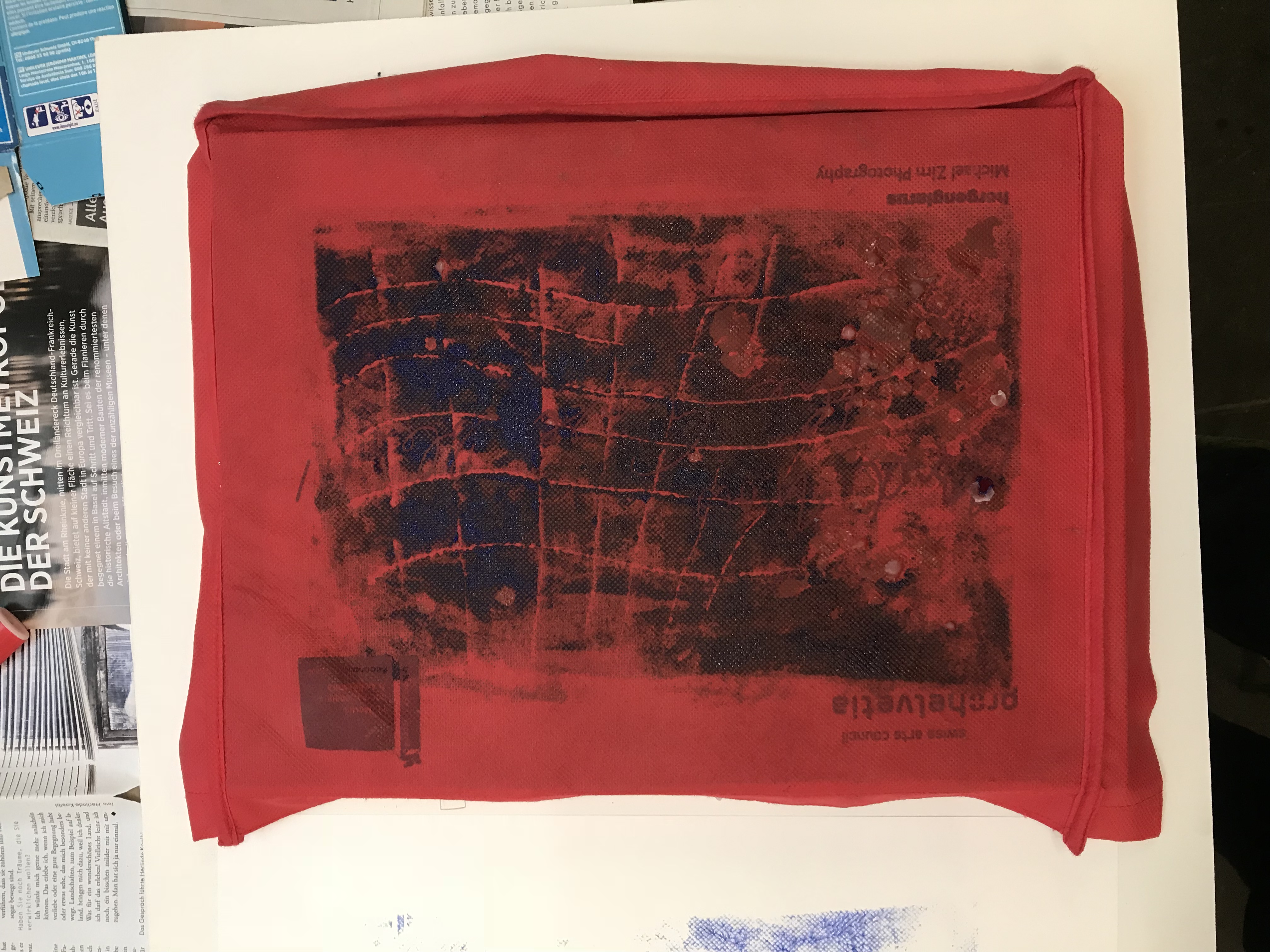
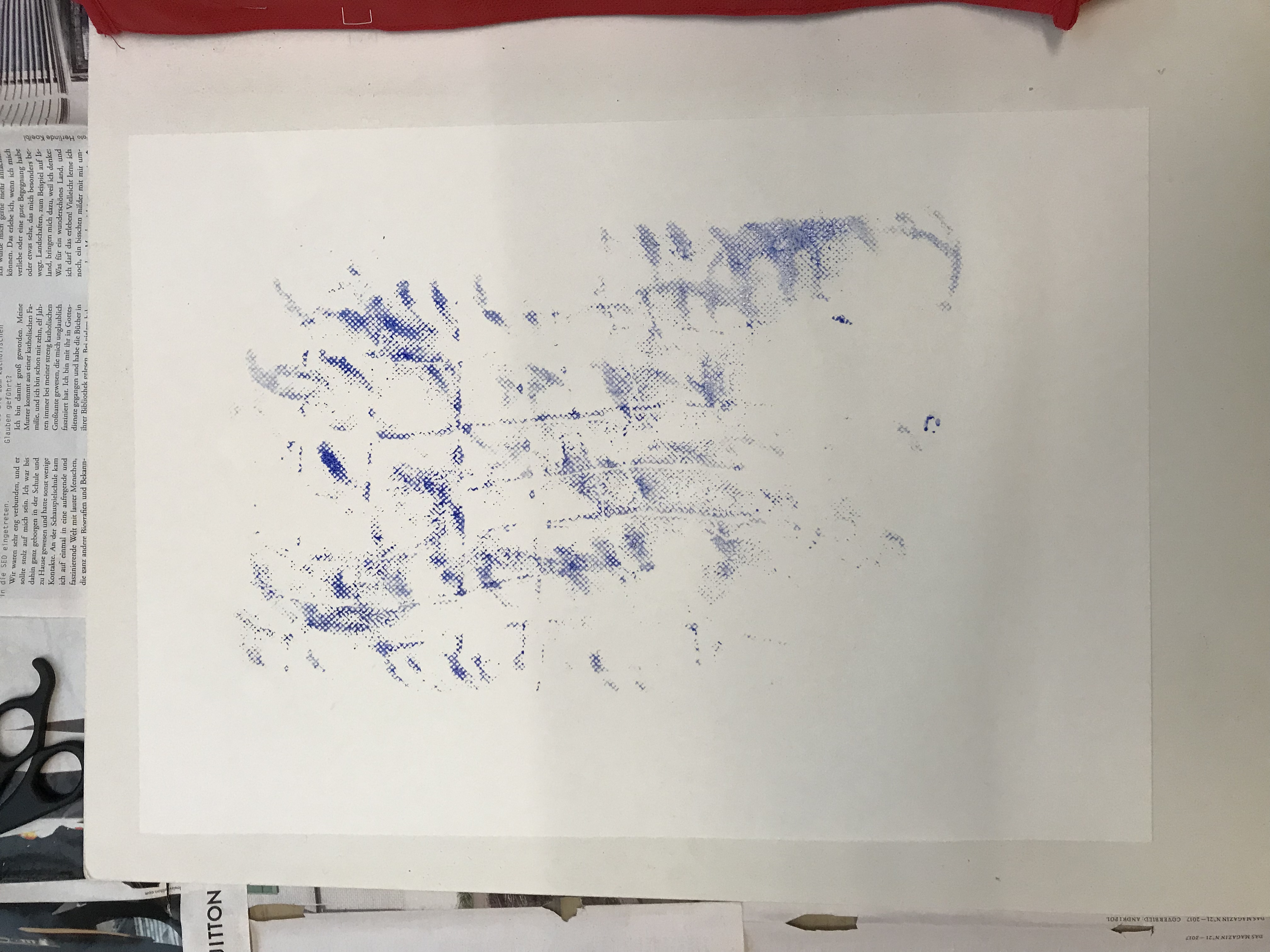 Third try
The Same colors/tools textile, waxy chalk() is used to to the blocking..
Third try
The Same colors/tools textile, waxy chalk() is used to to the blocking..

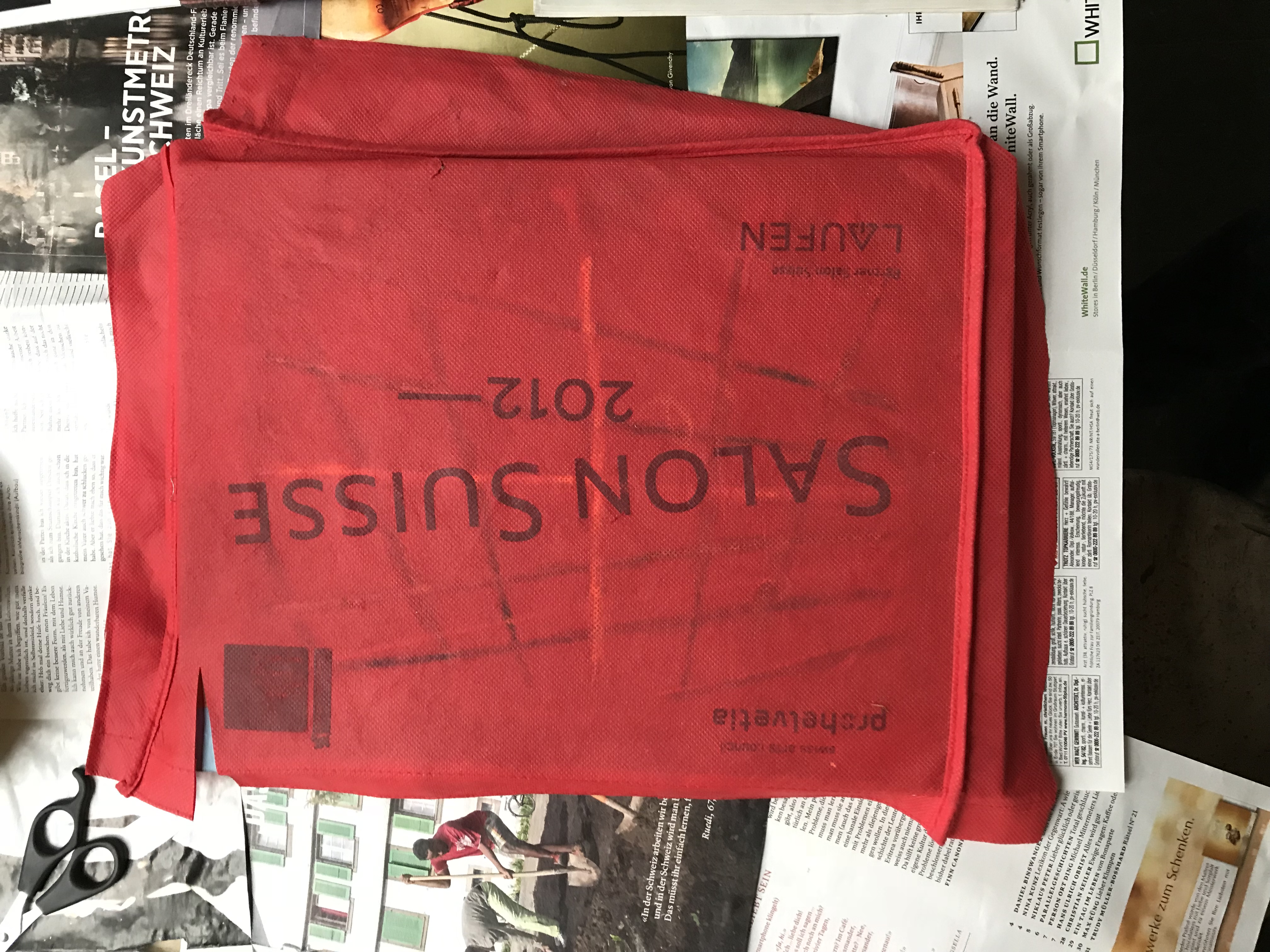


 The textile has no real holes, it rather soakes with color and then passes it on. After it was all soaked, the prints became more evenly. I started to use it twice on the same paper, shifting and rotating the frame a little bit.
The textile has no real holes, it rather soakes with color and then passes it on. After it was all soaked, the prints became more evenly. I started to use it twice on the same paper, shifting and rotating the frame a little bit.
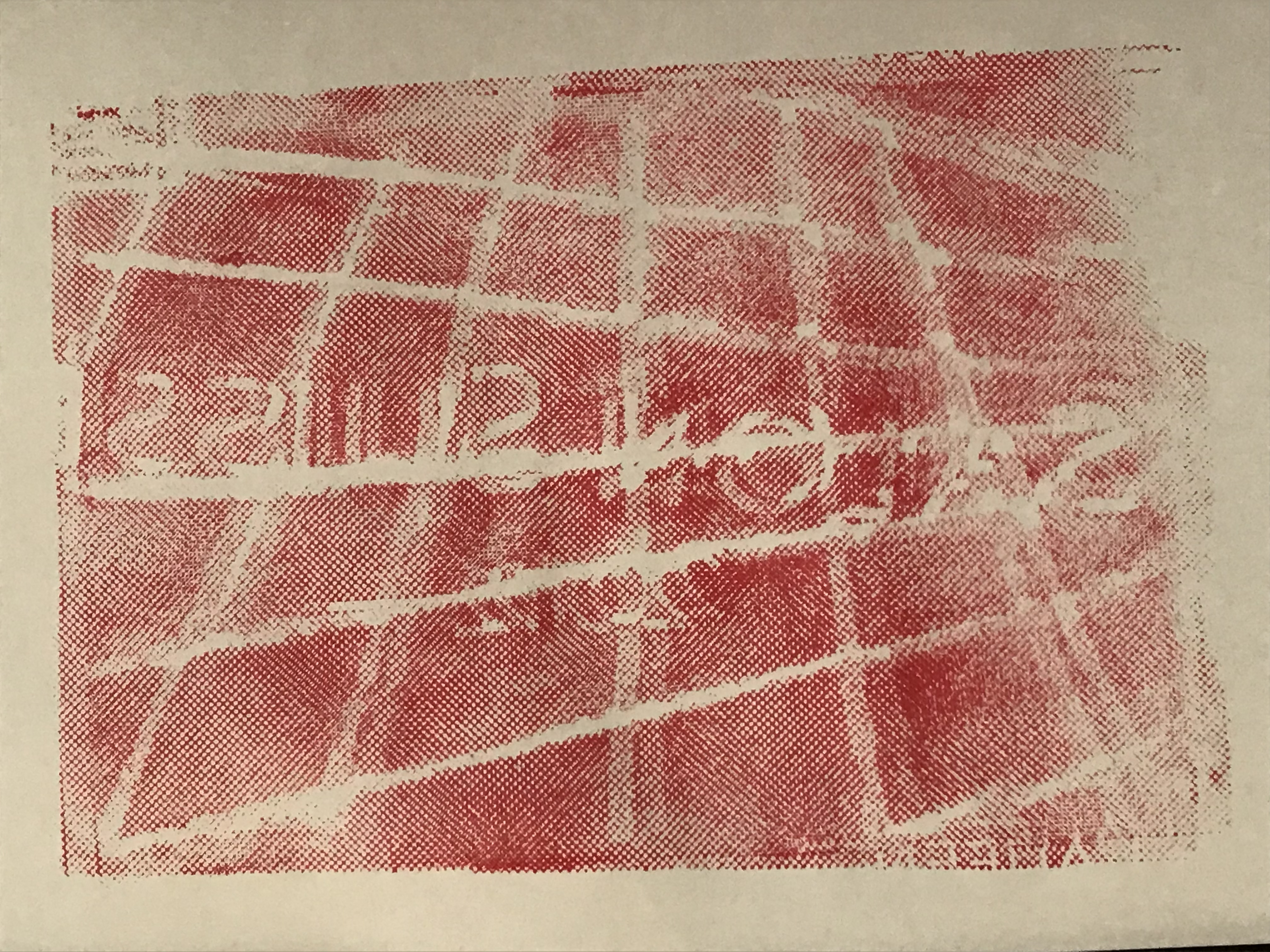

 Some moiré-effects occurred. They got smaller the more I rotated.
Some moiré-effects occurred. They got smaller the more I rotated.




 Moving the the frame with out lifting it left a motion-trace on the print, like too long shutter-time in photography.
Moving the the frame with out lifting it left a motion-trace on the print, like too long shutter-time in photography.

